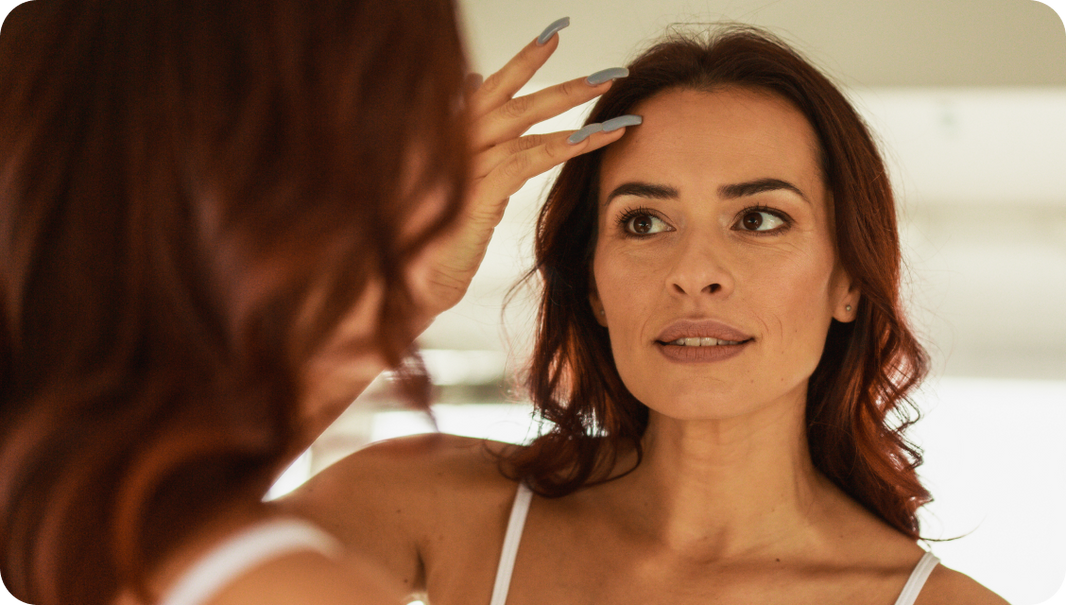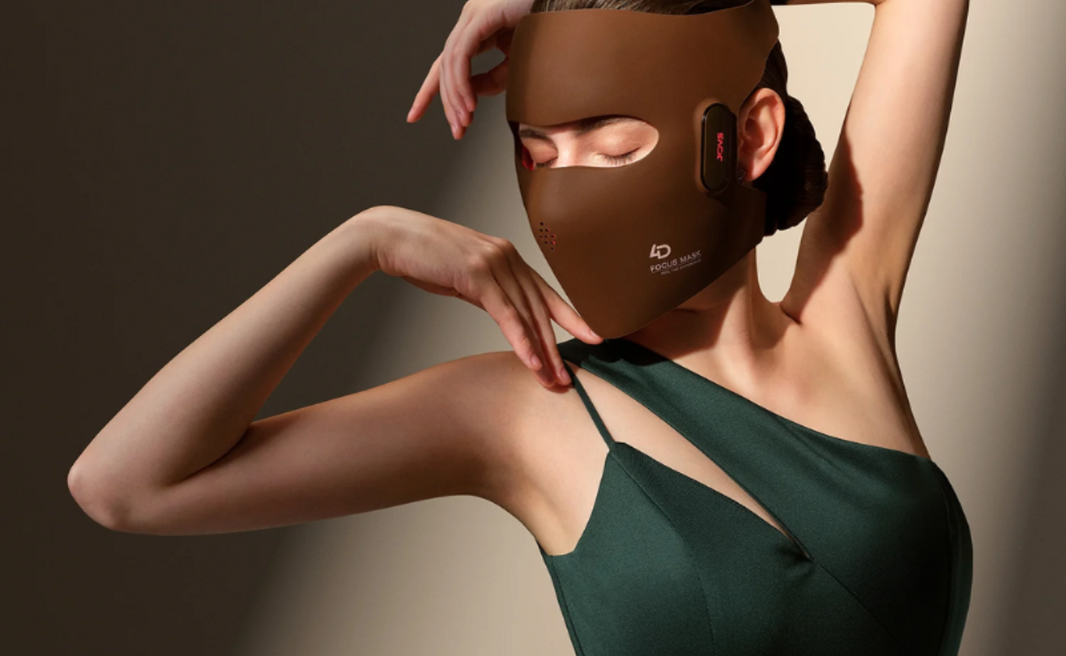Red light therapy (RLT) has gained attention for its various health benefits, from skin rejuvenation to pain relief, and even aiding in wound healing.
However, like many emerging therapies, it comes with its share of concerns, one of which is the question: Can red light therapy cause cancer?
With its growing popularity, some users worry about whether prolonged exposure to light wavelengths could potentially lead to harmful side effects, including cancer. In this article, we’ll explore the science behind red light therapy, its safety profile, and whether there’s any evidence to support these fears.
Understanding Red Light Therapy: How Does It Work?
Red light therapy is a non-invasive treatment that uses low-level wavelengths of red or near-infrared light to stimulate cellular activity. The wavelengths used in RLT typically range between 630 and 850 nanometers (nm). However, the JOVS 4D Laser Light Therapy Mask offers four wavelengths, ranging up to 1064nm, to target wrinkles, dark circles, forehead lines, and redness for precise skin improvement. These wavelengths penetrate the skin and promote healing by energizing the mitochondria, the “powerhouses” of cells, to produce more ATP (adenosine triphosphate), which fuels cellular repair and regeneration.
Unlike UV light, which has been associated with skin damage and an increased risk of cancer, red light is non-ionizing. This means it does not carry enough energy to damage DNA or cause mutations, which are typically associated with cancer development. The key difference lies in the type of light used in red light therapy versus potentially harmful treatments like tanning beds or overexposure to the sun.

Red Light Therapy vs. Ultraviolet (UV) Light: Clearing Up the Confusion
One of the main reasons people ask if red light therapy can cause cancer is due to confusion between red light and ultraviolet (UV) light. UV radiation is known for its potential to cause skin cancer, particularly with prolonged exposure to sunlight or tanning beds. However, red light therapy uses a completely different spectrum of light.
-
UV Light: Ultraviolet light, particularly UV-A and UV-B rays, can damage the skin by penetrating deep into the dermis, leading to DNA damage and increased cancer risk. It’s also known for causing sunburns and contributing to premature skin aging.
-
Red Light: Red and near-infrared light do not have the same damaging effect on the skin as UV rays. They work by enhancing cellular activity, boosting collagen production, and reducing inflammation without penetrating deeply enough to harm cellular DNA.
Given these fundamental differences, red light therapy does not share the cancer-causing risks associated with UV light exposure. Comparing UV light and red light is like comparing apples and oranges.
What Does the Research Say? Examining the Link Between Red Light Therapy and Cancer
Extensive research has been conducted on red light therapy, both for its therapeutic potential and for its safety profile. To date, no studies have shown that red light therapy increases the risk of cancer. On the contrary, some studies have even explored red light therapy as a potential treatment for cancer patients to reduce the side effects of radiation therapy and chemotherapy.
For example, research published in the journal Supportive Care in Cancer found that low-level light therapy (LLLT), including red light therapy, was effective in reducing oral mucositis, a painful side effect of chemotherapy and radiation treatments for cancer. The therapy helped patients heal faster and minimized pain without any evidence of causing cancer or worsening their condition.
Moreover, red light therapy has been studied for its role in boosting the immune system, repairing tissues, and reducing oxidative stress, all of which are essential for overall health and may even reduce the risk of cancer in certain contexts.
Red Light Therapy and Skin Health: Is It Safe for Your Skin?
Another concern for users is whether red light therapy can damage the skin or lead to skin cancer. As mentioned earlier, red light does not have the same effects on the skin as UV rays. In fact, it’s often used to treat skin issues such as:
- Acne: Red light therapy can reduce inflammation and bacteria associated with acne, leading to clearer skin.
- Wrinkles and Fine Lines: By stimulating collagen production, red light therapy can improve skin elasticity and reduce the appearance of wrinkles.
- Wound Healing: Red light therapy promotes faster healing by encouraging skin cell regeneration and improving blood flow to the treated areas.
Given its proven benefits for skin health, it’s clear that red light therapy is generally safe and effective for most skin types. However, it's important to use the therapy correctly and follow manufacturer guidelines for at-home devices or consult a professional for clinical treatments.
Can Red Light Therapy Be Harmful? Understanding the Potential Risks
While red light therapy is generally considered safe, especially when used appropriately, some users might experience mild side effects. These side effects are rare and are often associated with overuse or incorrect application of the therapy.
Common Side Effects:
- Skin Irritation or Redness: Prolonged exposure to red light therapy, especially at higher intensities, may cause temporary redness or irritation, particularly in individuals with sensitive skin.
- Eye Strain: Some users report mild eye discomfort when exposed to direct red light. It is recommended to wear protective goggles during treatments, especially if the light is used near the face.
Who Should Avoid Red Light Therapy?
- Photosensitive Individuals: People with conditions that cause photosensitivity or those taking medications that increase light sensitivity (like certain antibiotics) should consult with a healthcare provider before undergoing red light therapy.
- Cancer Patients: While red light therapy may help with certain cancer-related conditions (like oral mucositis), it’s essential to consult an oncologist before using it. There’s no evidence that RLT causes cancer, but it’s still advisable to discuss any new treatments with your medical team.
Debunking the Cancer Myth: Can Red Light Therapy Cause Cancer?
After reviewing the available research and understanding the fundamental differences between red light and UV light, it’s clear that red light therapy does not cause cancer. The light wavelengths used in RLT are non-ionizing, meaning they do not carry enough energy to damage DNA or cause mutations, which are the primary triggers for cancer development.
If anything, red light therapy has shown potential in cancer care for reducing treatment side effects, improving wound healing, and reducing inflammation. As long as it's used correctly and as recommended by professionals, there’s no scientific basis for the fear that red light therapy could cause cancer.
How to Safely Use Red Light Therapy
For those interested in using red light therapy, whether for skincare, pain relief, or general wellness, there are a few key guidelines to follow to ensure a safe and effective experience:
- Choose the Right Device: Opt for a high-quality device designed for red light therapy. The 4D Laser Light Therapy Mask, for example, is a popular at-home option for individuals looking to improve skin health and rejuvenation.
- Follow Instructions: Always adhere to the manufacturer’s guidelines, including session duration and frequency. Overusing red light therapy could lead to irritation without providing additional benefits.
- Protect Your Eyes: Always use protective goggles, especially when treating areas around the face, to prevent eye strain.
Conclusion
In summary, there is no evidence to suggest that red light therapy causes cancer. The therapy uses non-ionizing wavelengths that are safe for the skin and body, unlike harmful UV rays. In fact, red light therapy has been found to promote healing, reduce inflammation, and improve overall cellular health without posing a significant risk to users.
Whether you’re looking to improve your skin, reduce pain, or enhance your overall wellness, red light therapy can be a valuable tool in your health regimen. By using devices like the 4D Laser Light Therapy Mask, you can safely enjoy the benefits of red light therapy. With wavelengths reaching up to 1064nm, it provides powerful, targeted treatment without harmful side effects.
As with any treatment, it’s essential to consult with a healthcare professional if you have concerns, especially if you’re undergoing treatment for an existing condition or are sensitive to light-based therapies. However, for most individuals, red light therapy offers a safe and effective way to enhance health and beauty without the fear of cancer or other serious risks.








